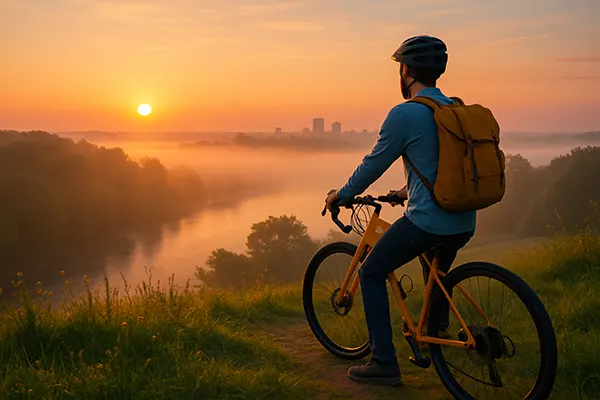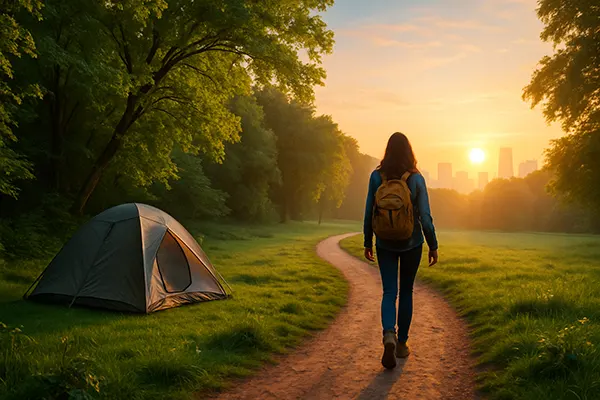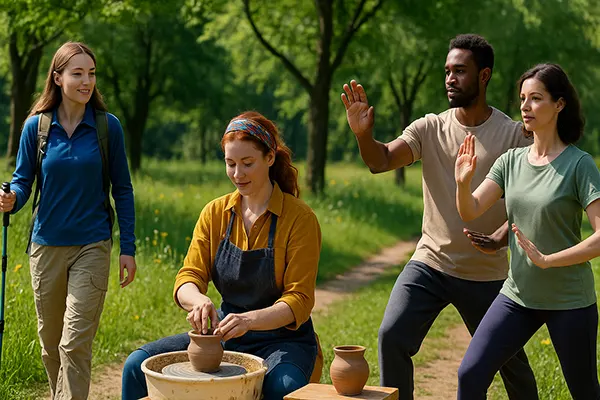Microadventures: Embracing Small Escapes Close to Home
Modern life can feel like a constant race, with little room left for travel or novelty. Yet, adventure doesn’t require crossing borders or booking flights. The concept of microadventures is gaining popularity in 2025, especially among urban dwellers and full-time workers. These short, local, and affordable escapades help inject a sense of novelty into everyday routines without needing to leave your region.
What Are Microadventures and Why They Matter
Microadventures are short, inexpensive, and accessible experiences designed to break daily monotony. Coined by British adventurer Alastair Humphreys, the term highlights the idea that adventure can be found anywhere — even within a few miles of your home. Whether it’s a night under the stars in your backyard or cycling to a nearby hill to watch the sunrise, these moments offer a mental reset without major planning.
In 2025, more people are turning to microadventures as a practical way to recharge. With work-from-home culture still prevalent and travel restrictions occasionally resurfacing, local nature spots, historical routes, or even urban corners unexplored before offer fresh air and clarity. Microadventures also contribute positively to mental health, promoting mindfulness and a stronger connection to nature.
They cater to all lifestyles — solo explorers, couples, or families with children. A weekend picnic with no smartphones, a bike ride through woodland trails, or an overnight stay at a local farm can all count as refreshing microadventures. The goal isn’t extravagance but intentionality and presence in the moment.
Ideas to Get Started with Microadventures
If you’re unsure how to begin, start with something small. Plan an evening walk in a district you’ve never visited or sleep outside in a tent for just one night. These experiences remind you of the charm in simplicity. You don’t need expensive gear or exotic landscapes to feel recharged — just a curious mindset.
Try a “no-tech” Sunday where you explore the nearest national park or green space with no devices allowed. If you have access to water, wild swimming at dawn can become a ritual. Even rooftop stargazing with a warm blanket can turn into a peaceful tradition that brings unexpected joy.
Apps like Komoot or AllTrails can help identify microadventure locations, from forgotten forest trails to scenic bridges perfect for sunrise viewing. Your neighbourhood likely hides more secrets than you’ve imagined — you only need to start looking.
How to Make Microadventures Part of Your Weekly Life
One of the main appeals of microadventures is how easily they fit into a busy schedule. Instead of waiting for a public holiday to go on vacation, people now design mini-retreats around their normal week. This means no need to take time off work or spend days preparing. The planning is minimal — the reward is maximum.
Set a personal challenge: one microadventure a week for three months. This could mean different types — hiking a new path, learning a skill like outdoor cooking, or simply reading a book by a lake. Creating a routine around small escapes makes them sustainable and enhances overall well-being.
It’s also helpful to build a microadventure toolkit: a backpack with essentials like a reusable water bottle, snacks, a flashlight, a journal, and a compact blanket. Keeping these items ready removes the friction from spontaneous decisions and encourages more frequent outings.
Involving Others and Building Community
Microadventures don’t have to be solo acts. Involving friends or family adds a social element that can deepen relationships. Group walks, shared campfire cooking, or sunrise yoga meetups are simple yet bonding activities. Sharing stories of these experiences creates collective memories.
Online communities — especially in 2025 — thrive around this theme. Social media groups focused on local adventure swaps and ideas can help you discover places and activities nearby that you hadn’t considered. People share GPS routes, safety tips, and ideas for seasonal adventures that match the weather.
You can also start your own microadventure group in your town or suburb. Meet regularly, explore local corners together, and even get involved in clean-up activities to contribute positively while exploring. These acts not only rejuvenate you but also your surroundings.

The Environmental and Financial Benefits of Staying Local
One powerful reason behind the rise of microadventures is sustainability. In 2025, with more awareness around climate change, individuals are making conscious decisions to limit carbon footprints. Staying local avoids air travel, reduces fuel usage, and lessens over-tourism in fragile environments.
Beyond the environmental benefits, microadventures are budget-friendly. Instead of spending hundreds or thousands on a weekend getaway, you could explore a new cycling route, visit a small-town museum, or sleep outdoors at no cost. This accessibility makes it available to nearly everyone, regardless of income level.
They also shift our focus from consumption to experience. Instead of chasing luxury or distance, microadventures teach us that beauty lies in what we often overlook. Even a rainy morning walk in a nearby forest becomes a lesson in presence and gratitude.
Keeping the Spirit of Adventure Alive
Living adventurously doesn’t always require bold moves or international destinations. The microadventure mindset cultivates appreciation for what’s close to home. It’s about discovering joy in the simple, the routine, and the overlooked.
In a world where digital overload is constant, these mini escapes offer peace and reconnection. They remind us that life is more than screens and deadlines — it’s also about sunsets, streams, silence, and shared laughter under an open sky.
By adopting microadventures into your lifestyle, you’re choosing a richer, more connected existence. And most importantly — it’s something you can begin today, without waiting for the “perfect time.”





